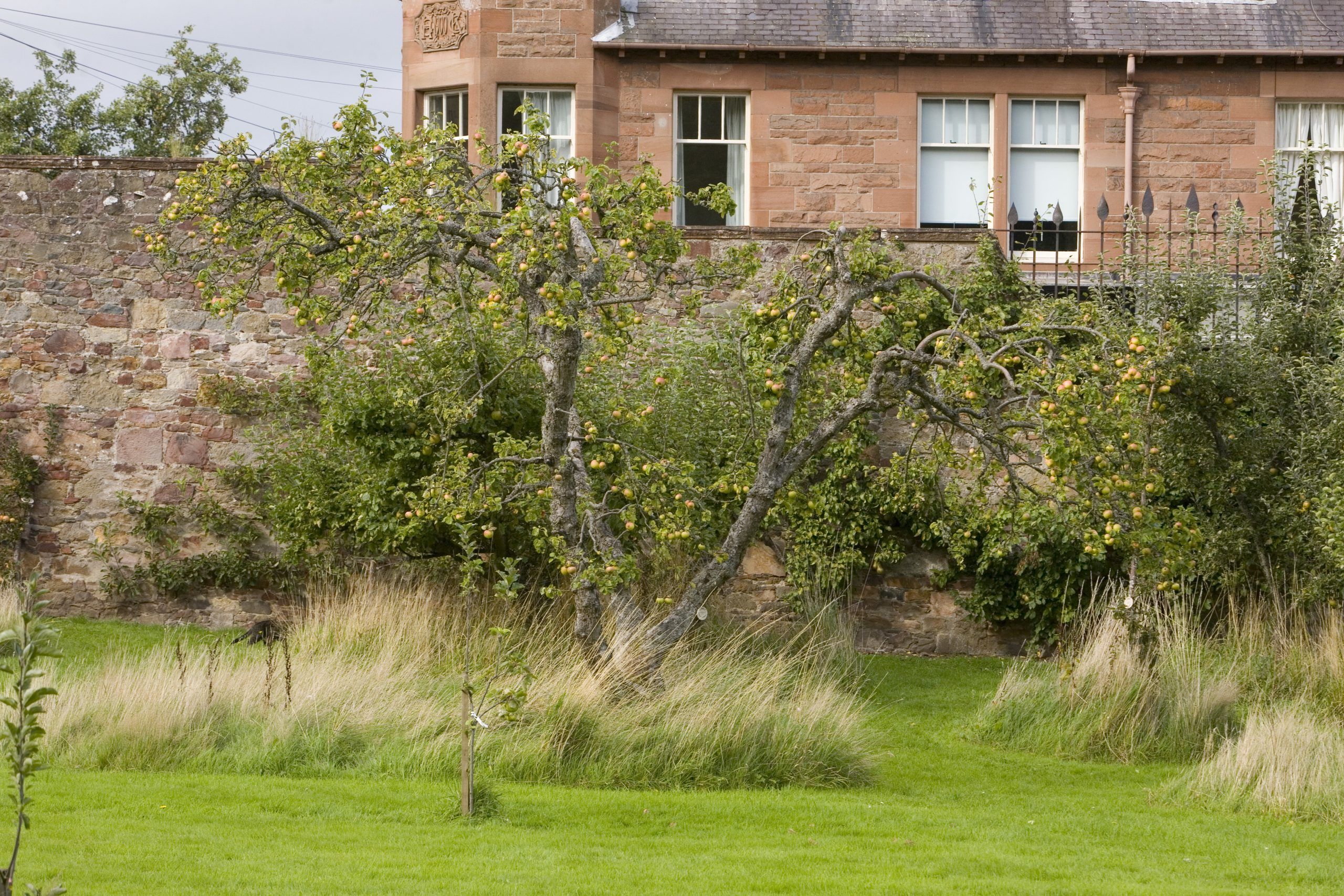Traditional orchards are defined for priority habitat purposes as orchards managed in a low intensity way, in contrast with orchards managed intensively for fruit production. Use of pesticides and inorganic fertilisers is occasional, if at all. Mowing under the trees will be infrequent and the herbaceous layer may be managed through grazing or cutting for hay. Spacing of trees in traditional orchards can vary quite widely but are generally half as dense as commercial orchards.
Habitat structure (rather than vegetation type, topography or soils) is the defining feature of the habitat, with open grown trees set in herbaceous vegetation. Generally distinguished by the species composition (primarily family Rosaceae), the arrangement of the trees and the small scale of the individual habitat patches.
Orchards are hotspots for biodiversity in the countryside, supporting a wide range of wildlife. The specific wildlife of each orchard site depends on the mosaic of habitats they encompass, including fruit trees, scrub, hedgerows, hedgerow trees, non-fruit trees within the orchard, the orchard floor habitats, fallen dead wood and associated features such as ponds and streams. A feature of the biodiversity of traditional orchards is the great variety of fruit cultivars that they contain, supporting the Global Strategy for Plant Conservation 2001 (of which the UK is a signatory).
Action Needed
- Support for heritage skills training in gardening and horticulture so that traditional orchards can continue to be managed effectively for habitat and produce
- Support for locally-based food initiatives using traditional Scottish varieties of orchard fruit. Having an outlet for the produce supports the continuity of the habitat and sustainably, locally grown food options reduces carbon emissions.
- Recognition of the value of traditional orchards so as to prevent further loss from development.
Threats
- Traditional orchards do need active management to ensure the ongoing health of the trees within them and a cycle of re-planting to ensure continuity of habitat. That management takes craft skills – from recognition of varieties and their particular needs and characteristics to annual pruning to promote flowering and fruiting. These skills are being lost as traditional orchards are lost.
- Traditional orchards are under pressure from land development. Many are in walled gardens and on level ground, attractive for housing and other buildings.
- Intensification of agriculture, imports and competition from supermarkets mean that the traditional outlets for home grown produce are reduced, being less profitable. Traditional varieties well-suited to the Scottish growing climate are at risk.
MSP Nature Champion

Pam Gosal
Member for: West Scotland
Region: West of Scotland
Party: Scottish Conservative & Unionist Party



